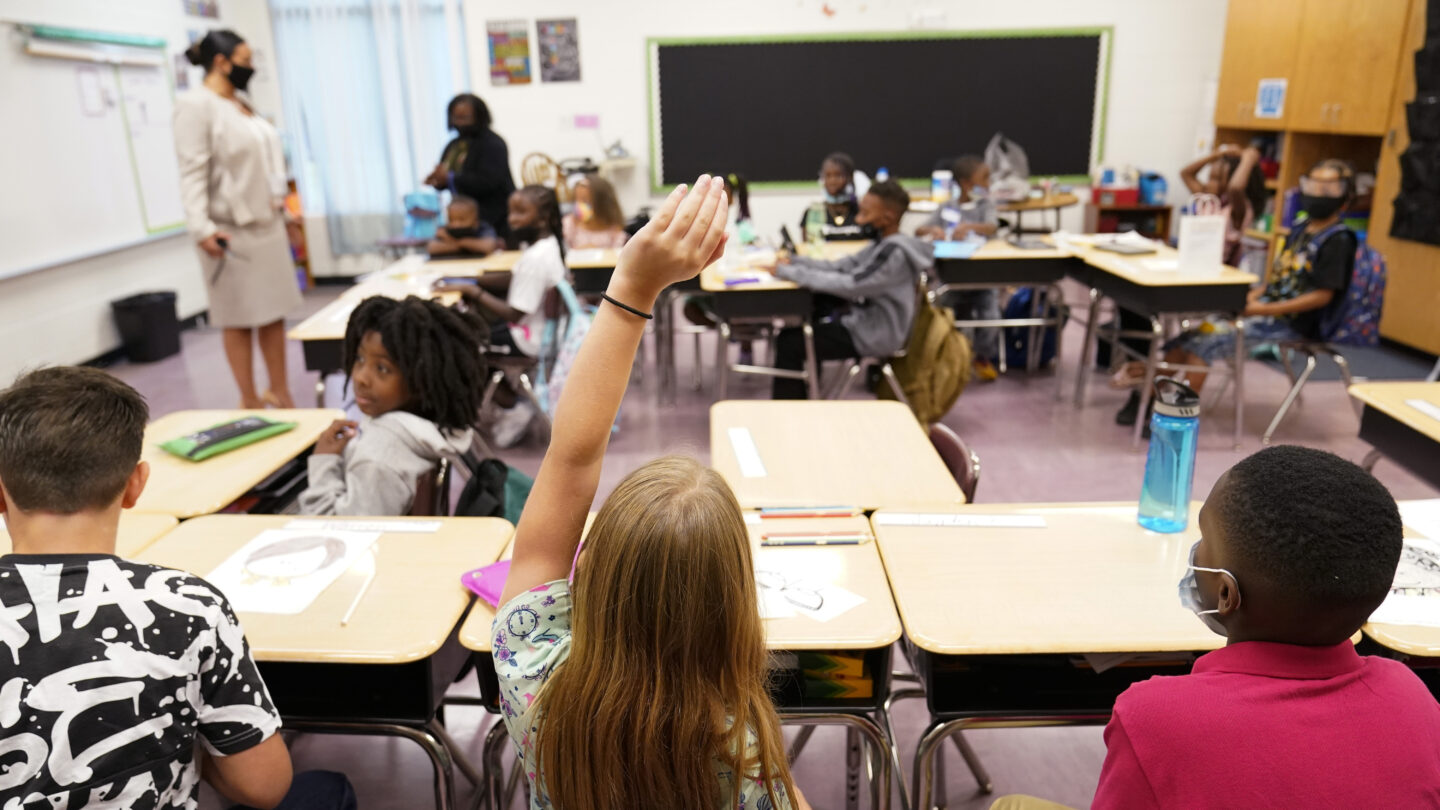Students across the country are moving into dorms or getting ready to board school buses for their first day of class.
But unlike the past two years, COVID-19 numbers are down nationally and most students are walking in the school doors without masks. From kindergarten all the way through college, educators are trying to convey a sense of normalcy, and for Dr. Richard Martini, a child and adolescent psychiatrist at the University of Utah, that push comes with added baggage.
“For some of these kids, [there is] a good bit of anxiety around getting back into the classroom on a regular basis,” he says, “They’re understanding and trying to deal with everything that has happened over the last two years.”
While the pandemic caused widespread disruption to learning, one of the biggest concerns, for students of all ages, has been how it has affected their mental health.
High numbers of teenagers have reported persistently feeling sad or hopeless, and the Biden Administration has tried to make student mental health a priority.
For parents concerned about how their students are handling the new school year, here are five suggestions mental health experts say can help them monitor their child’s mental health:
1. Be proactive
Whether your student is starting pre-K or high school, there are many ways to be proactive. Martini says a lot of anxiety for students comes from the unknown, so help walk them through the steps – sometimes literally.
“Give the child an opportunity to walk around the school grounds,” he says. “If you’re talking about kindergartners … if there’s a playground that’s adjacent to it, get used to being around the building.”
If you don’t have access to the actual school grounds early, looking at a map in “street view” on your phone or computer can help. Get them used to talking about class or recess. Ask them what they want to eat for lunch. The more questions, Martini says, the more real it becomes: “What are they excited about? What are they looking forward to?”
Athletics and arts programs can help, too. Even if students are nervous about the classroom, he says, getting them to pinpoint other aspects of school life that excite them can relieve the academic stress and provide outlets for students to express themselves.
2. Ask about the good and the bad
Asking questions is the best way to understand how students are doing. But for older students, especially, if you’re only asking about the good things, you may not get the full picture.
“When you’re talking to your student, ask them about what’s going well, but also be very clear and ask what isn’t going as well,” says Nathaan Demers. He’s a clinical psychologist in Denver and helps run YOU at College, an app designed to connect students with mental health resources. He says, don’t shy away from the hard questions with your kids – ask them about the challenges they’re facing, too.
Demers tell parents: Pay particular attention to how you phrase the questions. Using “what” instead of “why” can remove any hint of accusation. That leaves room for students to open up about their feelings and relieves the pressure some students feel to be having a good time.
For example, you might want to ask “What isn’t going well?” instead of “Why aren’t you enjoying [school]?’ “
3. Keep an eye on changing behavior
“One thing that can admittedly be challenging,” Demers acknowledges, is that “a lot of the common signs of the onset of mental health symptoms are very much those of major transitions.”
Things like changes in sleep, increased irritability, increased weight gain or changes in appetite can signal to clinicians that there may be an underlying issue. But for incoming college students, he adds, “a lot of those things can naturally happen … with students going away from home for the first time.”
There is no perfect answer, so Demers says to trust your gut. “Parents know their kids better than anyone else,” and often they can sense when something isn’t right. “There’s a difference between, ‘Oh, my son or daughter is having a challenging day or a challenging week’ versus ‘something just seems off.’ “
For younger students, one of the most common warning signs is irritability with school or teachers, says Martini at the University of Utah. He notes that for younger students, irritability with teachers has been a recent trend in classrooms. “Particularly when you’re dealing with young children, there is a tendency to blame the school teachers and principals for some of the challenges they’re having,” he says.
4. It’s not just COVID
The increase in anxiety and mental health issues isn’t solely a result of the pandemic. The number of students struggling with mental health has been rising for years, says Sarah Lipson, an assistant professor of public health at Boston University.
She helps lead an annual survey of hundreds of colleges around the country to get a better picture of student mental health.
“You wouldn’t look at a bar chart and say, you know ‘what started to happen in spring of 2020?’ ” she explains. “That’s not the case. We instead see this gradual but problematic trend that continued through COVID.”
According to her department’s survey, the number of college students experiencing mental health issues first spiked in the 2015-2016 school year and has been going up since.
While the past two years have been especially challenging, Lipson says not to belittle students’ feelings by explaining them away with the pandemic. In an academic year where there is a push for normalcy some students may not be ready to return to business as usual.
Lipson says to keep an eye on those students in particular: “One of the most powerful specific symptoms that we see— it’s also the strongest predictor of students dropping out — and that’s a lack of interest in their usual activities.”
5. Lend a hand
Parents can help by identifying the problem and offering solutions. Ultimately, resources are there to help students of all ages deal with their mental health, but the daunting task of finding the right one can keep students away.
“If you cut off your finger right now,” Demers says. “You know to go to the emergency room. But a lot of times when students have changes in their appetite, aren’t sleeping or feeling more frustrated, a lot of times students don’t know that [those are] signs of depression or anxiety.”
All of the experts we spoke with recommend that parents know about the resources available, and be ready to step in to help their children find the help they need.
Some in-person resources include talking with a counselor at school or finding an on-campus group like Active Minds. But often virtual resources are the easiest first step. Demers’ app YOU at College is one example – students can input their symptoms and find recommendations for nearby resources. In a crisis situation the easiest option for families is to text HOME to 741741 to connect via phone with a trained counselor.
Copyright 2022 NPR. To see more, visit https://www.npr.org.
9(MDAxODM0MDY4MDEyMTY4NDA3MzI3YjkzMw004))

9(MDAxODM0MDY4MDEyMTY4NDA3MzI3YjkzMw004))








